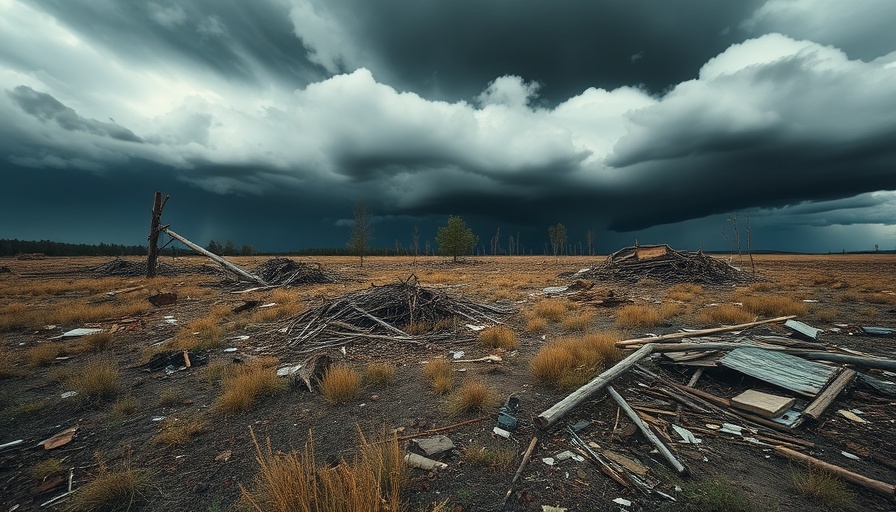
The Wrath of Nature: Understanding the Recent Storms
The recent storms that swept through multiple states in the U.S. have claimed 36 lives, serving as a grim reminder of the destructive power of extreme weather. Reports highlight how severe weather alerts continue to flash across Pennsylvania, New York, and states in the Mid-Atlantic and Southeast. With significant damage inflicted and hundreds of thousands left without power, the devastation is widespread.
Missouri Faces the Brunt of the Damage
Among the affected areas, Missouri stands out as the hardest hit state. Here, the storm fatalities reached 12, with Governor Mike Kehoe confirming that one person is still missing. The sheer scale of the destruction is staggering: over 500 homes destroyed, including a church and grocery store, and a mobile home park completely demolished. Such catastrophic losses serve as a critical wake-up call highlighting the urgent need to bolster community preparedness for natural disasters.
Widespread Impact: A Nationwide Crisis
The storms didn't discriminate; they left a deadly trail across state lines. Mississippi reported six deaths, while Arkansas confirmed three fatalities. Kansas experienced a tragic multi-car crash, resulting in eight deaths during a sudden dust storm. Alabama’s toll was reported at two, with damage recorded across 52 counties. These numbers underscore the widespread impact and the complex tapestry of challenges communities face amidst such crises.
The Human Element: Stories of Loss and Resilience
Beyond the statistics, each death represents a life and a community impacted by this tragedy. Families are grieving, and communities are coming together to support those who have lost everything. The emotional toll of this disaster cannot be overstated; when homes are destroyed, entire lifetimes and memories are swept away. Action across state and federal lines is vital to ensuring that survivors receive the aid they need in a timely manner.
Future Predictions: What Lies Ahead?
Weather analysts believe the severity of storms like these may increase due to climate change, which is causing unstable weather patterns. Looking forward, it's crucial to invest in resilient infrastructure and community preparedness to mitigate future devastation. Experts recommend that local governments start implementing stronger building codes that can withstand extreme weather and provide better resources to educate citizens on emergency preparedness.
How You Can Help
In the wake of such tragedies, individual actions can make a difference. Many organizations are mobilizing to provide relief to affected families. Contributions can come in many forms: donations of money, food, and clothing, as well as volunteering time to assist recovery efforts. Engaging with local charities or national organizations like the Red Cross serves not only to alleviate immediate concerns but also fosters a sense of community and resilience.
In conclusion, the extreme weather events that have ravaged parts of the U.S. over the weekend are not just statistics; they underscore an urgent call for action. We must learn from these experiences to build a safer future. Stay informed, participate in community efforts, and advocate for policies that prioritize disaster preparedness.
 Add Element
Add Element  Add Row
Add Row 



 Add Row
Add Row  Add
Add 


Write A Comment